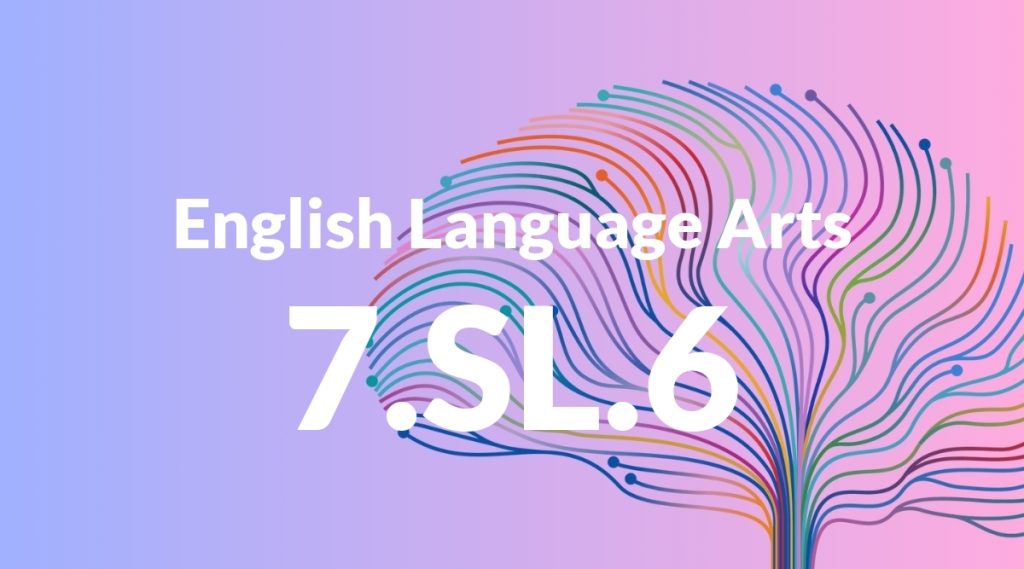Standard: 7.SL.6 – Adapt speech to a variety of contexts and tasks, demonstrating command of formal English when indicated or appropriate. (See grade 7 Language standards 1 and 3 here for specific expectations.)
Grade level: Grade 7
Subject: English Language Arts
Domain: Speaking & Listening
Teacher Overview
This standard focuses on helping students adapt their speech to different contexts and tasks, demonstrating command of formal English when appropriate. It is crucial for developing effective communication skills that are essential for academic success and future career opportunities. Students should understand the difference between formal and informal language and have some experience with public speaking and group discussions.
Mastering this standard will enable students to communicate effectively in a variety of settings, whether it be academic, professional, or social contexts.
Common Misconception 1
Some students may think that formal language is always required. This is incorrect because different contexts and audiences require different levels of formality.
Intervention 1
Provide examples of different contexts and discuss with students how the level of formality changes. Practice with role-playing exercises.
Common Misconception 2
Another common misconception is that adapting speech means changing their personality or identity. This is incorrect as the goal is to communicate effectively while remaining authentic.
Intervention 2
Encourage students to focus on the purpose and audience of their speech. Use activities that help them see how effective communication can enhance their message without altering their identity.
Prerequisite Knowledge
Students should have a basic understanding of formal and informal language, and be able to identify different contexts where each is appropriate. They should also have experience with basic public speaking and group discussions.
Subsequent Knowledge
Students will develop advanced communication skills, including persuasive speaking, effective argumentation, and the ability to tailor their language to various audiences and purposes.
Instructional Activities
- Role-playing different social scenarios
- Group discussions on various topics
- Formal presentations on assigned subjects
- Debates on current issues
- Writing and delivering speeches for school events




